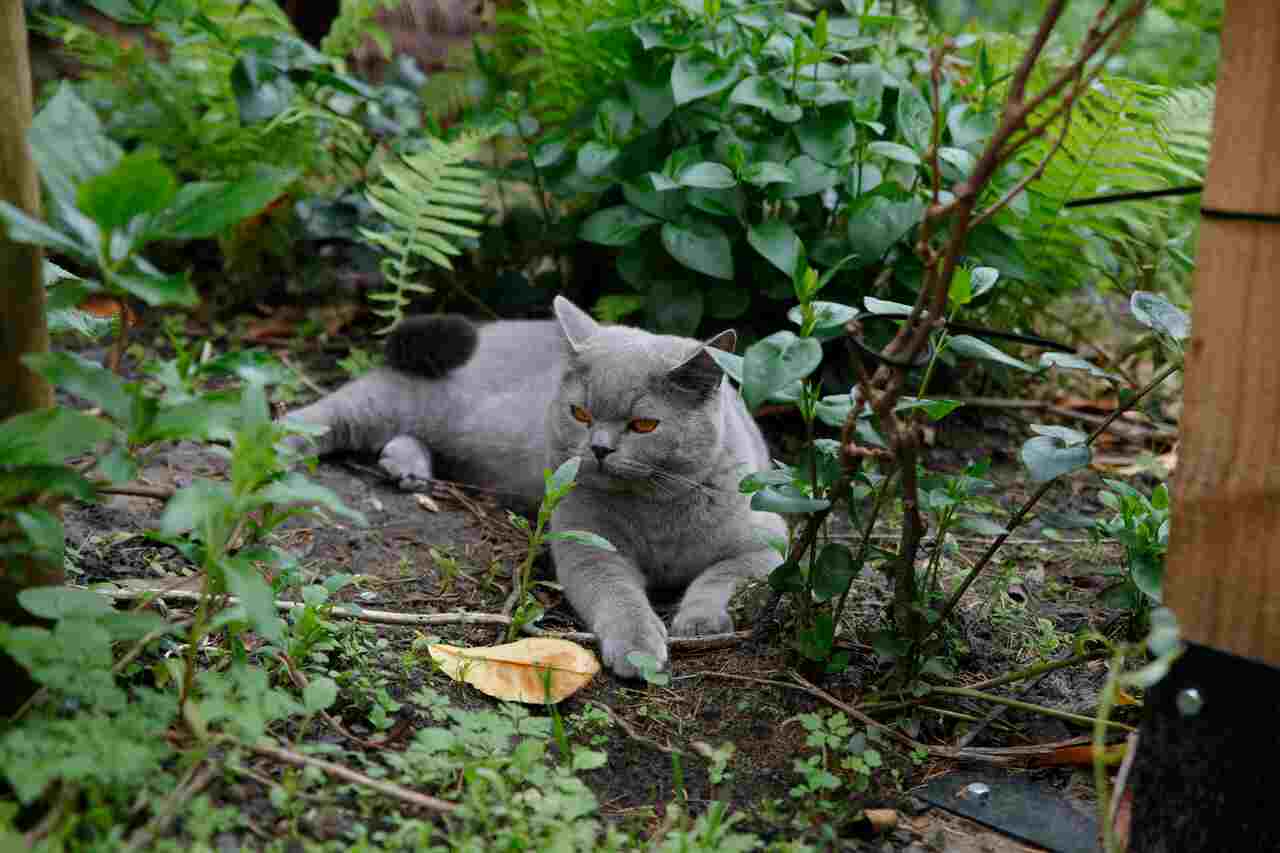
Are you trying to figure out how to keep strange cats out of your yard? According to experts, there are many things you can do to prevent nosy cats from visiting your yard. Check out some tips!
First of all, it is important to be patient with the cats, even if they are causing you problems. “Keeping unwanted cats out of your garden isn’t easy and can be frustrating, but it’s important not to cause any harm or distress to the cat,” veterinarian Dr. Hannah Godfrey told the website Pets Radar.
So, how can you keep cats out of your yard? Here are some ways to keep your garden protected from wandering felines, according to the expert:
1. Make surfaces uncomfortable for cats
If you don’t want cats to walk all over and dig up your plants, you’ll want to make the surfaces more difficult or less attractive for a cat to walk on. You can place pine cones, eggshells, or wood chips on the ground to make it less comfortable for their paws.
If you keep your flower beds wet, this can also help, as cats don’t like walking on wet ground. “As long as the material is uncomfortable, rather than sharp or dangerous, this can make your garden seem less appealing because cats have sensitive feet and like a comfortable place to rest,” explained Dr. Godfrey.
2. Use scents they don’t like
“Rosemary, citrus fruits, peppermint, lavender, and thyme are just a few of the strong smells that cats dislike. Keeping plants or citrus peels in spots where cats tend to enter the yard will help deter them,” the veterinarian suggested.
“Essential oils are often more effective but should be replaced regularly and used sensibly and in moderation to avoid causing skin or respiratory irritation in the cat,” she warned.
If you want to try essential oils, mix a few drops of essential oils like peppermint, eucalyptus, or rosemary with a cup of water and spray the area where you don’t want the cat to enter, as the smell will repel them.
3. Keep your yard tidy and clutter-free
Keeping your garden tidy and clutter-free will make your garden less interesting for cats. Don’t leave items lying around that might pique a cat’s curiosity, whether it’s your children’s or pets’ toys, or loose garden or laundry items like strings.
“A cluttered yard offers many places for cats to hide, hunt, and play, so keeping it as tidy (and therefore boring!) as possible can help make it less appealing to cats,” Godfrey said.
Also, make sure not to leave food scraps outside, including food left out for stray cats. You might think you’re doing a good deed, but if you feed them the best cat food, they’ll definitely come back for more.
Not to mention, you could attract other unwanted animals or make the cat sick, as they may not be used to the food they received. Open cans and food scraps can also attract rats, which would, in turn, attract more cats.
4. Build a fence around the garden
The easiest way to keep a cat out is to build a high, enclosed fence. “If you decide to build a fence or use nets to keep cats away, make sure the holes or gaps are appropriately sized so that the cats don’t get their heads or limbs stuck. Keep it well-maintained so that there are no sharp edges that can cause injuries,” said the veterinarian.
5. Install a sprinkler
Some people use a sprayer or hose to squirt water at unwanted feline visitors. While not the best method of deterring cats, Dr. Godfrey explained that a sprinkler could be a good option.
“Squirting water at cats in your yard can cause stress. But if you have a regularly used sprinkler, this will likely deter cats from entering, just to be sure,” the expert added.
6. Try using sound
If a cat manages to enter the yard and you see it, simply clap your hands to scare it off or drive it away. “Long-term noise deterrents that emit sounds cats don’t like aren’t a good idea because they cause stress. But one-off noises, like clapping (rather than a horn or something similar), may be enough to make a cat move on,” concluded Dr. Godfrey.
This content was created with the help of AI and reviewed by the editorial team.

